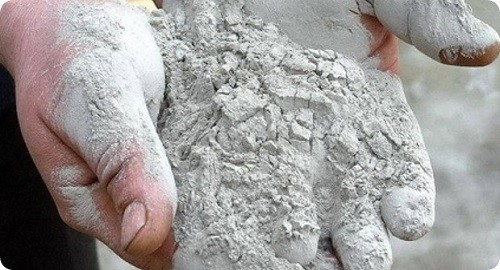
Types of putty: Start, Finish, Universal, Ready, Dry Building materials
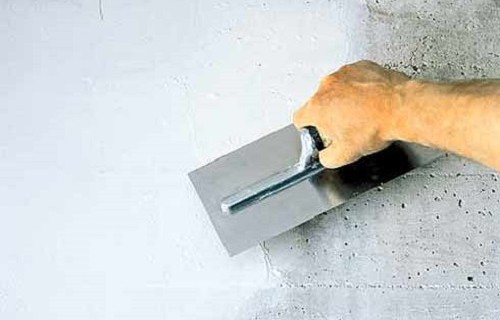
Putty - universal building material, allowing to smooth out the irregularities of walls, ceilings and even furniture (decorative putty). The market offers a huge selection of mixtures, each of which has its purpose. In this article, you will learn how to choose the proper putty and what formulations are suitable for a particular type of room.
Content
General characteristics of material
Putty compositions are used to level the ceilings and walls. They are used to prepare for paint (pasting with wallpaper, tiles, whitewings) and as an finishing finish (decorative plasters with inclusions).
There are several types of putty, excellent in the composition, appointment and degree of readiness for use. So, on purpose distinguish between starting, universal and finish. Starting spacure is usually applied with a thick layer or several layers and is intended to be corrected by obvious wall defects. After drying the starting putty, the finish coating is applied. Universal blends can be used both as start-up and as an finishing putty.
Depending on the consistency, dry and ready-made mixes are distinguished. Dry putty are the most popular due to the ease of use and acceptable prices. They are sold in large packages weighing from 3 kg to 25 kg.
Benefits of dry mixes:
- you can vary the thickness of the mixture, adding more or less water;
- prepare the solution is very simple - just add water enough and mix;
- dry mixes are very convenient to transport and store;
- you can store dry putty for a very long time and at any temperature (only the level of humidity is important).
But this type of putty has its drawbacks:
- you will have to spend a certain time on the preparation of the solution;
- mix the mixture is recommended by small portions, because it quickly hardens;
- it is necessary to clearly follow the instructions from the manufacturer.
Finished putty sold in buckets of various volumes and can be used immediately after purchase. It has a special substance that does not allow the solution to quickly stick. It costs it more expensive, but has a greater plasticity compared to dry.
Types of spacure
Consider in more detail each type of putty depending on the composition:
- Latex putty - as a rule, all finished putty are latex, since it is LATEX that allows them to remain in liquid form and makes them more plastic. Such formulations are sold in buckets or large plastic tanks equipped with a hermetic lid. These putty are very easy to use, they can be stored an unlimited amount of time.
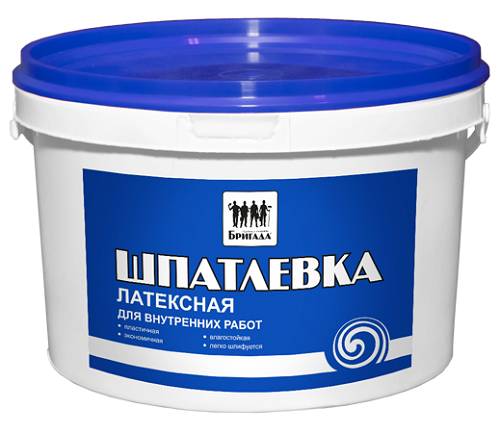
- Cement putty - in its composition there is a binder (cement), filler and solvent. Depending on the grade of the cement used, the characteristics of the mixture differ. The filler uses small river sand, peeled from all clay impurities, pebbles and other extraneous inclusions. If the sand contains more than 5% inclusions, it is considered dirty and is not suitable for kneading putty. It is possible to breed a mixture only with a clean water temperature not more than 20s. Mix the components follows in a special proportion: for 1 hour. Cement take 3-4 hours. Sand and add water, setting the desired lush. Cement putty is resistant to moisture, so it can be used in the bathroom or in the kitchen. Of the disadvantages, you can designate the fact that after drying the mixture there is some shrinkage, and the solution is not elasticized, it is difficult to work with it on concrete walls and cannot be applied to wooden surfaces. Also over time, the putty can crack.
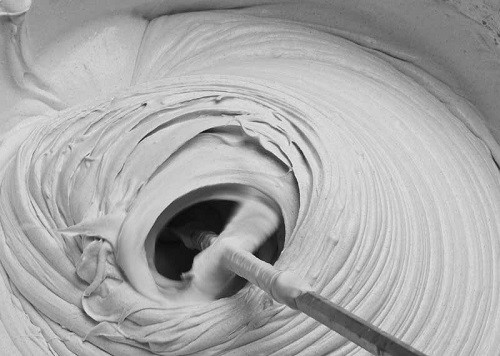
- Gypsum putty - made on the basis of plaster, which is known for the fact that it is capable of adapting to the microclimate of the room and gives air to circulate freely. If you need an ideal smooth wall, use a gypsum putty. After drying, you can immediately glue any wallpaper immediately, to apply paint, make an artistic painting. It dries the mixture very quickly and does not give any smell. Gypsum putty is absolutely hypoallergenna, has good fire resistance and is inexpensive. However, it is not possible to use it everywhere. Such a coating will not last long in the room with frequent temperature differences or high humidity. Gypsum is very easy to break or scratch, so it is not recommended to handle the children's room or a gaming room.
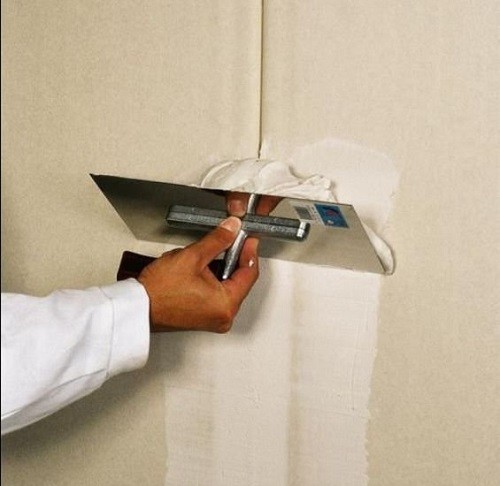
- Polymer putty - contains in the composition of the components that give strong elasticity, which is why the cost of such a putty is quite high. But its use always guarantees the perfect result and durability of the coating. When choosing should be particularly attentive and well to study the manufacturer's certificates, since there is a risk of buying fake.
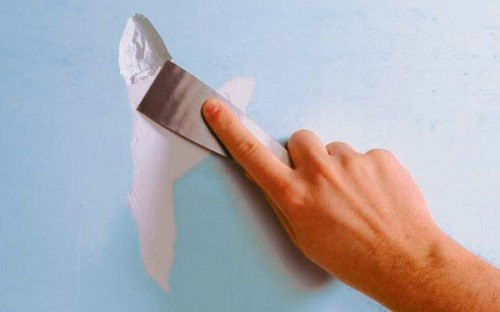
- Acrylic putty - can be used for internal and external finishes. It has excellent weather resistance and is well in contact with any surfaces. Mostly used as a finishing composition to impart the surface of ideal evenness and smoothness. Acrylic putty should apply a thin layer with a thickness of no more than 1 mm. It is ideal for wood, it has good strength, does not crumble over time, there is no odor and extraneous toxic impurities in the composition.
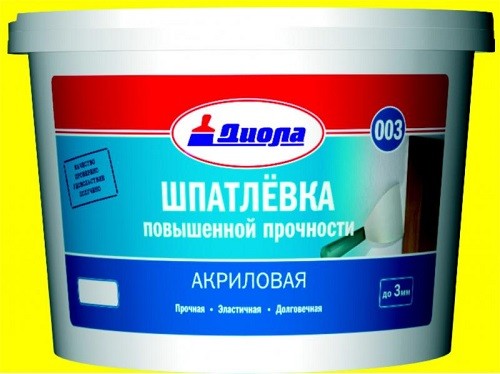
How to choose a spacure
Before choosing a putty, you should decide on the operating conditions of the coating. From this directly depends the choice of the type of mixtures. For example, a gypsum putty is suitable for premises with moderate and low moisture. It may be an entrance hall or living room. In the bathroom or in the kitchen it is best to use cement or acrylic putty, since these compositions are not afraid of humidity.
Useful tips on choosing a spacion mix:
- If you plan to keep painting walls, use ready-made solutions, and if you think glued wallpaper - dry mixtures.
- If you find it difficult to choose, give preference to a universal mixture.
- If you purchase putty in buckets, open the lid and check if there are no extraneous impurities (garbage, particles, stones).
- It is recommended to buy dry mixes for maximum savings - they are an order of magnitude cheaper ready.
- If you do not want to save on quality, buy products of European manufacturers.
- Pay attention to the color of the putty - for the subsequent blending of the wallpaper only the white mass is suitable.
Overview of popular marks
We suggest considering the characteristics of the most popular putty brands in the domestic market. This will help determine the choice and correctly select a mixture for repair.
Most popular species of putty mixtures:
- Starting spacing Knauf HP made on a plaster basis. It is used for the interior decoration of residential premises, offices, receiving and other non-residential buildings with a moderate level of humidity. The minimum layer is 4 mm, the maximum is 15 mm. The manufacturer produces it in large bags of 30 kg. If you apply a layer of 1 mm, then the pack of putty is enough to cover 4 square meters. m Square. Actively applied by professional builders for operational repairs - the mixture can be used 15 minutes after cooking, and complete drying occurs within 24 hours. Low cost, rapid drying, no shrinkage and excellent result in the form of smooth walls without cracks make this putty one of the most sought-after on the market.
- The finish putty Knauf HP is also characterized by an acceptable cost and is used to prepare the walls to stick wallpaper or paint. It gives a smooth and smooth surface, dries in 15-25 hours depending on the layer thickness (from 0.5 mm to 4 mm). Sold in bags of 30 kg. 900 g of the mixture will cover 1 sq. M. M Square with a layer thickness of 1 mm. The disadvantage of this product is the frequent presence of large solid impurities that create some difficulties in operation.
- Starting putty Ceresit St29 is designed to work with brick, concrete, cement-sand, lime walls inside or outside the building. Also used to eliminate surface defects. It is not allowed for rooms with high humidity, as well as for the repair of floors. The mixture is ready for use in 50 minutes. After stirring and hardens for 10-15 hours. Reinforcing fibers in the composition provide enviable strength, but it is necessary to achieve a uniform distribution of these fibers. To do this, stir the composition with a construction mixer at least 2-3 minutes. With a layer thickness of 4 mm, 7.2 kg of mixture will cover 1 sq. m Square. Ceresit ST29 is characterized by good frost resistance and can withstand temperatures -50c.
- Ceresit CT 225 finishing gypsum putty is available in bags of 25 kg. It serves for the final finish and applied to the pre-prepared surface covered with a layer of starting putty. Requires additional humidification when contact with concrete, brick or any other porous material. The finished dilution putty should be used for an hour, applying a layer with a thickness of no more than 4 mm. Do not add binders or fillers. The coating is pretty durable and very smooth. Ideally white color is well suited for shook wallpapers and painting. The cost of such a putty is much higher than that of competing manufacturers.
- Universal putty Kreisel 662 fine-grained type based on cement-sensitive mixture. Designed for coating concrete and brick surfaces with a thin layer. It can be used both on plastered and in unwritten walls, because it has excellent adhesion. Suitable for external and interior finishing works. Resistance to humidity allows you to use it in bathrooms and kitchens. In addition to the binder, additives are designed to extend the durability and improve the operational quality of the coating. The putty gives a weak shrinkage, therefore there is a risk of cracks. 5 mm thickness is enough to cover 7 square meters. m surface (bag 25 kg). Due to its versatility, good operational indicators and low cost is one of the most popular brands in the domestic market.
- Starting spacure ScanMix TT is distinguished by high quality. It is an aligning putty on a cement basis, which is equally well suited for internal and external finishing works. It can be used to align walls of concrete and bricks, eliminating the joints between panels, cracking cracks. It has good water resistance, it can withstand low temperatures that it is not possible to be suitable for construction in the northern regions of the country. Also can be used in rooms with high levels of humidity. Before applying the mixture, the surface should be prepared, clearing dust and drying. The putty layer can vary from 4 mm to 20 mm. Drying occurs within 24 hours, but it is possible to apply the finishing or decorative coating not earlier than 48 hours. The only significant disadvantage is a mixture - a large shrinkage (cracks may appear).
- Finish polymer putty Scanmix LH Standart. It is recommended for processing various types of surfaces, including drywall and concrete walls. Allows you to get a perfectly smooth wall with shining white, which can not even paint. It has high adhesion towards any surfaces and does not give any shrinkage. Can be used in premises with high levels of humidity. If this putty was worth a little cheaper, it could be considered perfect.
We hope this article helped you determine the criteria for choosing putty. In conclusion, we suggest familiarizing yourself with the useful video on how to work properly with this building material:




